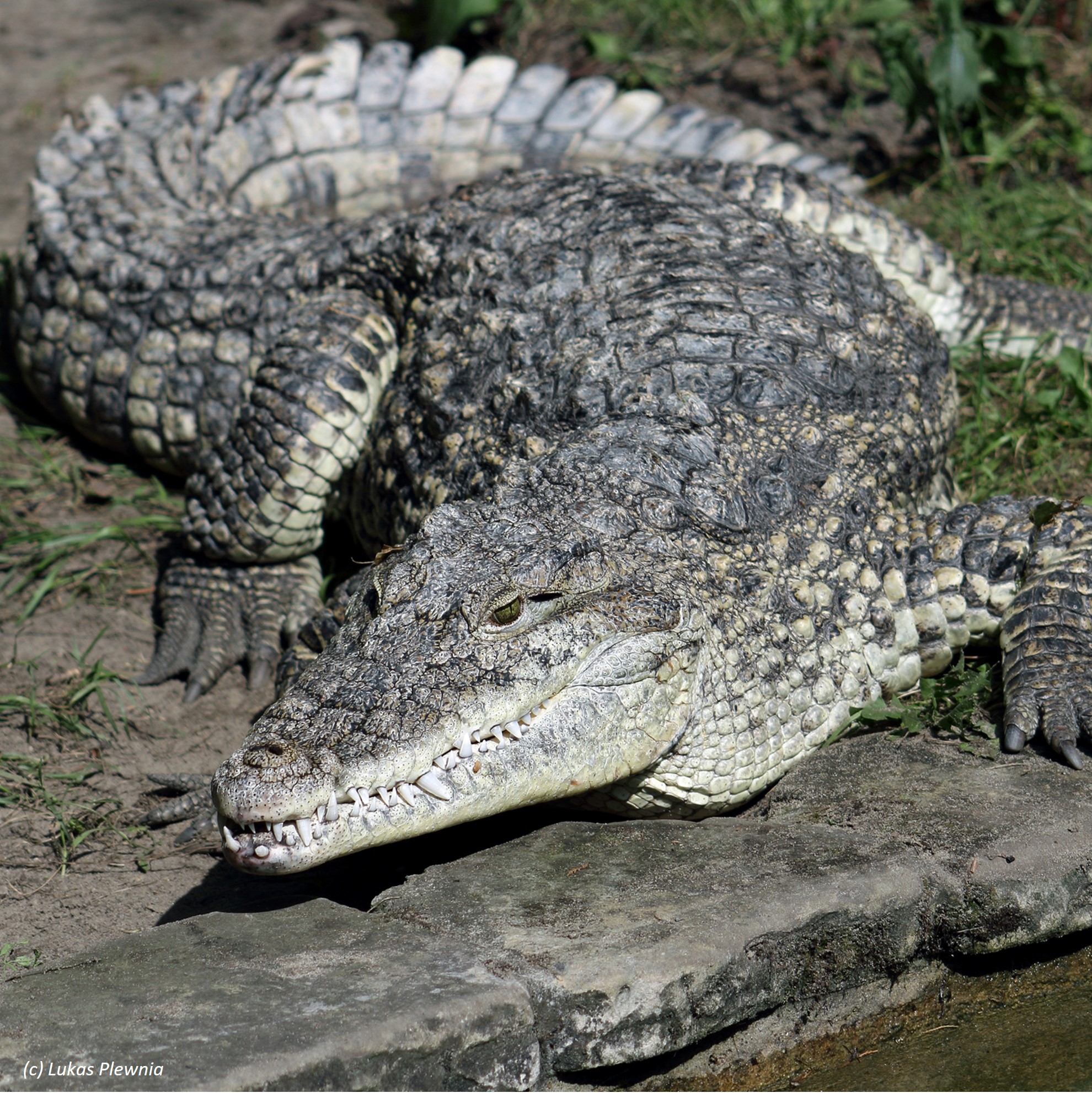
cuban crocodile

National Parks/ Sanctuaries
-
Common Names
cuban crocodile
Regions
Cuba
Population
Approximately 3,000-6,000 individuals in the wild.
Habitat
Cuban crocodiles inhabit freshwater environments like swamps and marshes.
Weight(in lbs) and Life Span
40-70 and 50-70
Regions
Cuba
The Cuban crocodile (Crocodylus rhombifer) is a medium-sized crocodilian species endemic to Cuba. Adults typically measure between 2.1 to 2.3 meters (6.9–7.5 feet) in length, with larger males reaching up to 3.5 meters (11 feet). They possess a robust physique with distinctive rough, pebbled scales and a striking coloration pattern of yellow and black, earning them the nickname "pearl crocodile." Their relatively long and strong legs make them the most terrestrial of extant crocodiles, adapted for movement on land. The Cuban crocodile exhibits unique physical and behavioral traits, including a shorter, broader snout and reduced webbing between the toes, which facilitate a more terrestrial lifestyle. They are known for their agility and, in captivity, have displayed cooperative hunting behaviors, indicating a higher level of intelligence compared to other crocodilian species. Their diet primarily consists of fish, turtles, and small mammals, with juveniles feeding on invertebrates and smaller fish. Mating occurs between May and July, with females laying clutches of 30 to 40 eggs, which they guard diligently until hatching. Despite their relatively modest size, Cuban crocodiles are highly aggressive and territorial, posing potential danger to humans who encroach upon their habitat.
Activity Instructions
- Draw the Animal: Use the next page to draw a picture of the animal. Use your imagination and make it colorful!
- Write an Essay: Write a short essay about the conservation efforts to save this animal. Here are some questions to guide you:
- Why is this species important in its ecosystem?
- What are the threats it faces, and how can we help?
- What do you find most interesting about this species?


